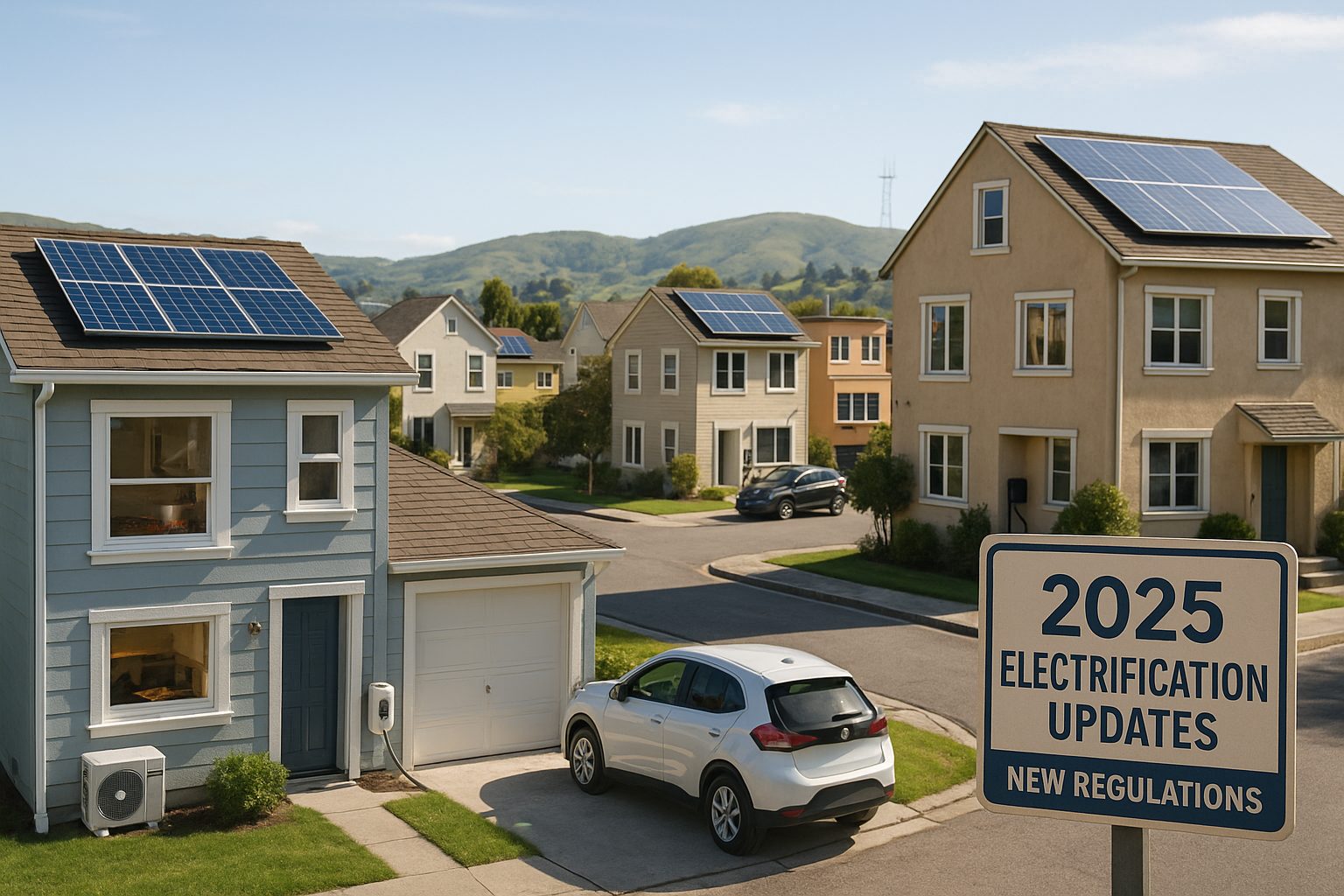The Bay Area Air Quality Management District (BAAQMD) has approved a landmark regulation to phase out the sale of gas-powered water heaters and furnaces across the nine-county region, marking one of the most aggressive clean-air initiatives in the U.S. In the coming years, this will have an impact on Bay Area homeowners.
The sale of gas-powered water heaters and furnaces will be phased out starting in 2027, with electric replacements becoming mandatory when existing units fail. This new rule from the Bay Area Air Quality Management District is designed to cut harmful air pollution but will have real-world implications for homeowners — from higher upfront costs to potential infrastructure upgrades. In this article, I break down exactly what you need to know and how to prepare.
Key Points:
- Appliances Affected
- The regulation targets gas-powered water heaters and furnaces due to their emission of nitrogen oxides (NOx), which contribute to smog and respiratory issues. Gas stoves and ovens are not included in this regulation.
- Implementation Timeline
- The bans on sales of gas appliances are set for:
- 2027: Water heaters less than 75,000 BTU/hr (typically residential tank water heaters).
- 2029: Residential and commercial furnaces.
- 2031: Water heaters between 75,000 and 2 million BTU/hr (commercial and multifamily).
- Scope
- New constructions must install zero-NOx (effectively electric) appliances.
- Existing homes can maintain current gas appliances until they break and cannot be repaired; replacements must be electric.
- BAAQMD estimates that the region’s 1.8 million households will fully transition over approximately 25 years.
- Health and Environmental Impact
- The regulation is projected to prevent 37 to 85 premature deaths annually and yield $400 million to $890 million in health benefits by reducing NOx and particulate matter emissions.
- Equity Considerations
- Low-income communities, often facing higher pollution levels, are expected to benefit significantly from improved air quality.
- Cost and Infrastructure Challenges
- Electric heat pumps can cost approximately $3,000 more than gas furnaces.
- Upgrading electrical panels may add $960 to $4,300, depending on the home.
- Older homes, particularly those built before 1978, may require significant retrofitting.
- Emergency Provisions
- Temporary use of gas heaters is allowed during emergencies, but specific guidelines are yet to be detailed.
- Utility Company Position
- PG&E supports the regulation, noting that a complete ban on all gas appliances would simplify infrastructure planning, as maintaining a declining gas system poses challenges.
Here’s a direct, unsentimental analysis of what this new gas appliance ban means for Bay Area homeowners:
- Replacement Will Be Mandatory — Eventually
- Homeowners aren’t being forced to replace working gas water heaters or furnaces immediately. However, when those appliances fail and cannot be repaired, replacements must be electric starting:
- 2027 for water heaters.
- 2029 for furnaces.
- Upfront Costs Will Increase — Especially for Older Homes
- Heat pumps (electric replacements) typically cost $2,000–$5,000+ more than standard gas units.
- If your electrical panel or wiring needs an upgrade, that can run $1,000–$4,000+, depending on your home.
- Older homes (common in Berkeley, Oakland, SF) may need significant retrofits, especially if they haven’t been updated since the ’70s or earlier.
- The Grid Will Be Put to the Test
- This policy assumes that the electric grid can support a surge in demand. However, many neighborhoods in the East Bay already experience grid issues during peak times. PG&E hasn’t detailed exactly how or when it will reinforce infrastructure.
- Equity and Incentives: Watch This Space
- The Air District emphasizes protecting low-income communities. However, as of now, no direct rebate or incentive program has been announced for regular homeowners. Middle-income owners might find themselves too “rich” for help, yet too financially constrained for upgrades. California’s TECH program or local utility incentives may eventually assist, but budget-conscious homeowners should prepare now.
- Get Proactive to Stay Ahead
- If your gas furnace or water heater is over 10 years old:
- Start planning for replacement now, while you still have options.
- Consider upgrading your electric panel before it becomes an emergency.
- If remodeling, opt for all-electric solutions to future-proof your home.
Conclusion
This isn’t a ban for ban’s sake — it’s about reducing harmful air pollution. But for homeowners, it’s also a cost, planning, and infrastructure challenge. Waiting until your furnace fails in winter will be the most expensive and stressful way to comply. Homeowners should proactively assess their appliances and electrical systems to prepare for the upcoming changes.


 Facebook
Facebook
 X
X
 Pinterest
Pinterest
 Copy Link
Copy Link
